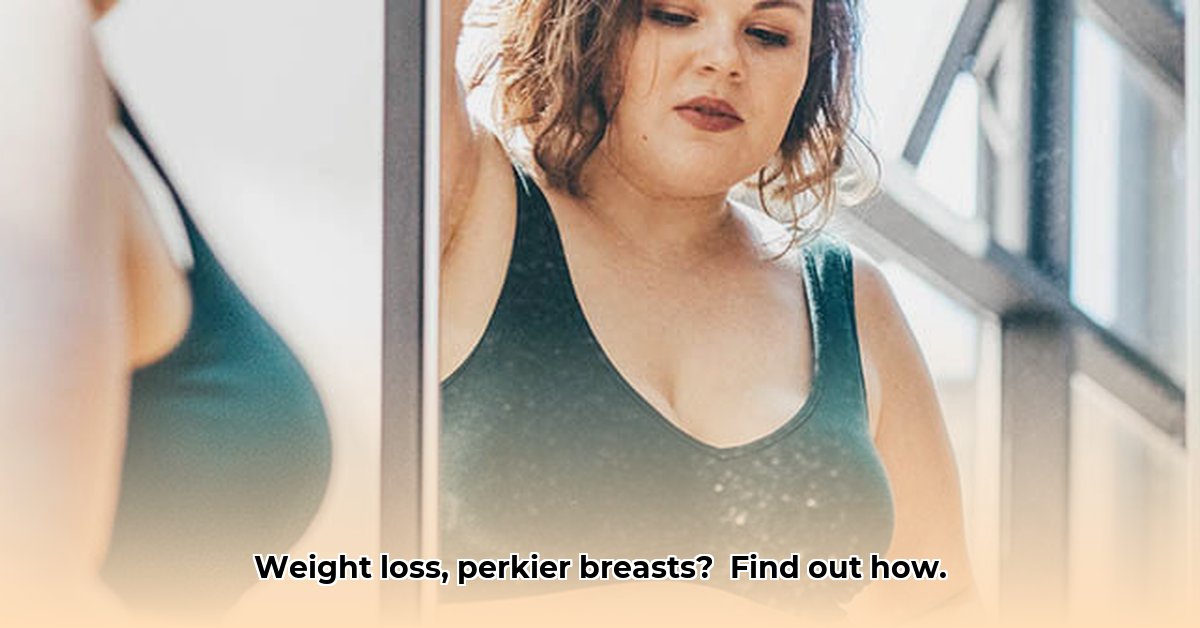
Understanding Breast Changes After Weight Loss
Weight loss, especially significant weight loss, can lead to changes in breast size and shape. Breasts are primarily composed of fat, glandular tissue, and connective tissue (Cooper's ligaments). When you lose weight, fat is lost, reducing breast volume. This can cause breasts to appear less full and potentially sag. The degree of sagging depends on several factors, including the amount and speed of weight loss, age, genetics, and initial breast size. Rapid weight loss often results in more noticeable sagging than gradual weight loss. Think of your skin as a balloon: when it's full (more fat), it's plump. When the air is released (fat loss), the balloon (your skin) may not return to its original shape.
Did you know that genetics play a significant role in how your breasts respond to weight loss? Some women experience minimal sagging, while others see more significant changes. This is perfectly normal.
Managing Expectations: A Journey of Self-Acceptance
It's crucial to be kind to yourself throughout this process. Disappointment is understandable, but remember that your self-worth isn't determined by your breast size or shape. Many women experience similar changes after weight loss. Focus on celebrating your overall health improvements and embrace self-acceptance. A positive self-image is essential during this transition.
Fact: Studies show that women who prioritize self-care and have strong support systems cope better with body image changes.
Non-Surgical Approaches: Lifestyle Changes and Exercises
While you cannot completely reverse sagging, several non-surgical methods can help. These strategies aim to improve breast support and skin elasticity. Results vary, and the degree of improvement depends on individual factors.
Gradual Weight Loss (1-2 pounds per week): This allows your skin to adapt more gradually, minimizing sagging.
Supportive Bras: Well-fitting, supportive bras, worn consistently, provide lift and support.
Targeted Exercises: Exercises that strengthen the pectoral muscles (push-ups, chest presses) can improve tone and support. (Consult a fitness professional for a personalized plan.)
Nutrition for Skin Health: A diet rich in protein, antioxidants (vitamins C and E), and omega-3 fatty acids promotes skin elasticity. (Consult a nutritionist for personalized dietary advice.)
Topical Treatments: Some creams claim to improve skin elasticity, but scientific evidence supporting their effectiveness is limited and results tend to vary. (Always consult a dermatologist before using topical creams.)
Surgical Options: Restoring Shape and Volume
If non-surgical approaches don't meet your expectations, surgical options, such as a breast lift (mastopexy) or breast augmentation, are available. These procedures can restore breast shape and volume but carry risks and require significant recovery time. This decision should be made after careful consideration and consultation with a qualified plastic surgeon.
Important note: Surgical procedures should only be undertaken after a thorough consultation with a plastic surgeon. They will discuss risks, including infection, scarring, and asymmetry, as well as recovery expectations and costs.
Choosing the Right Path: Personalized Approach
The best approach is unique to you. Factors to consider include your preferences, budget, and the level of sagging. Consult your doctor and/or a plastic surgeon for personalized guidance. They can provide comprehensive information, discuss your options, and help you make informed decisions.
Rhetorical Question: Are you comfortable with the level of sagging you're experiencing, or are you looking for more significant improvement?
Maintaining Breast Health Post-Weight Loss: Long-Term Strategies
Maintaining a healthy lifestyle after weight loss is key. Continue with a balanced diet, regular exercise, and good skincare practices. Regular breast self-exams and checkups with your doctor are vital for early detection of any problems.
Quantifiable fact: Regular self-breast exams, combined with mammograms, significantly increase the likelihood of early breast cancer detection.